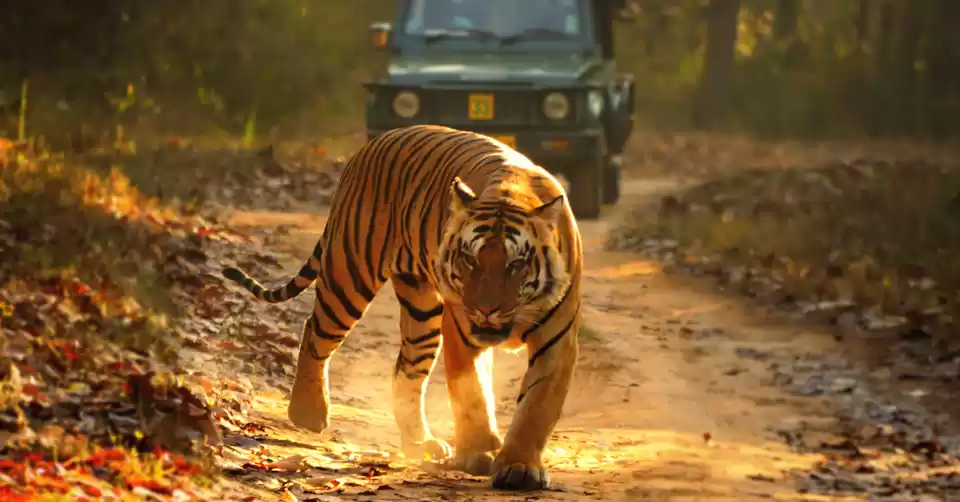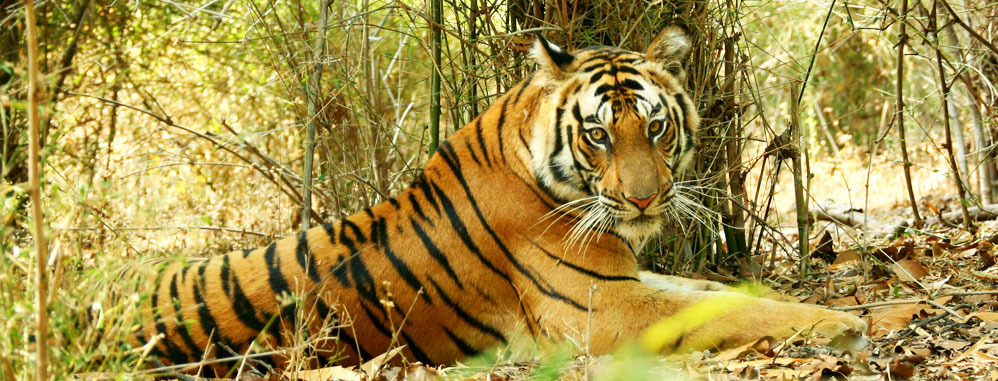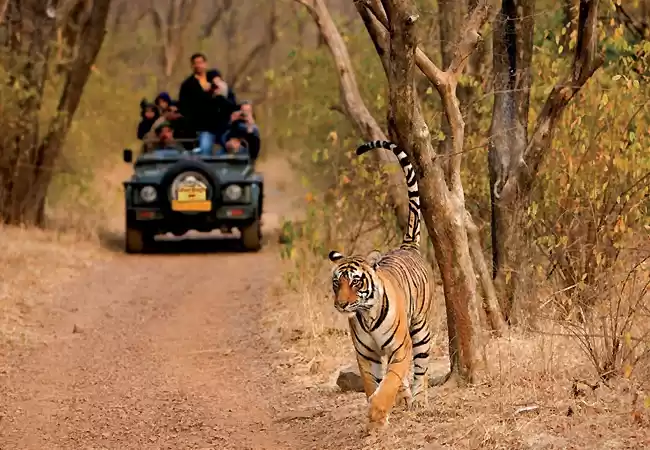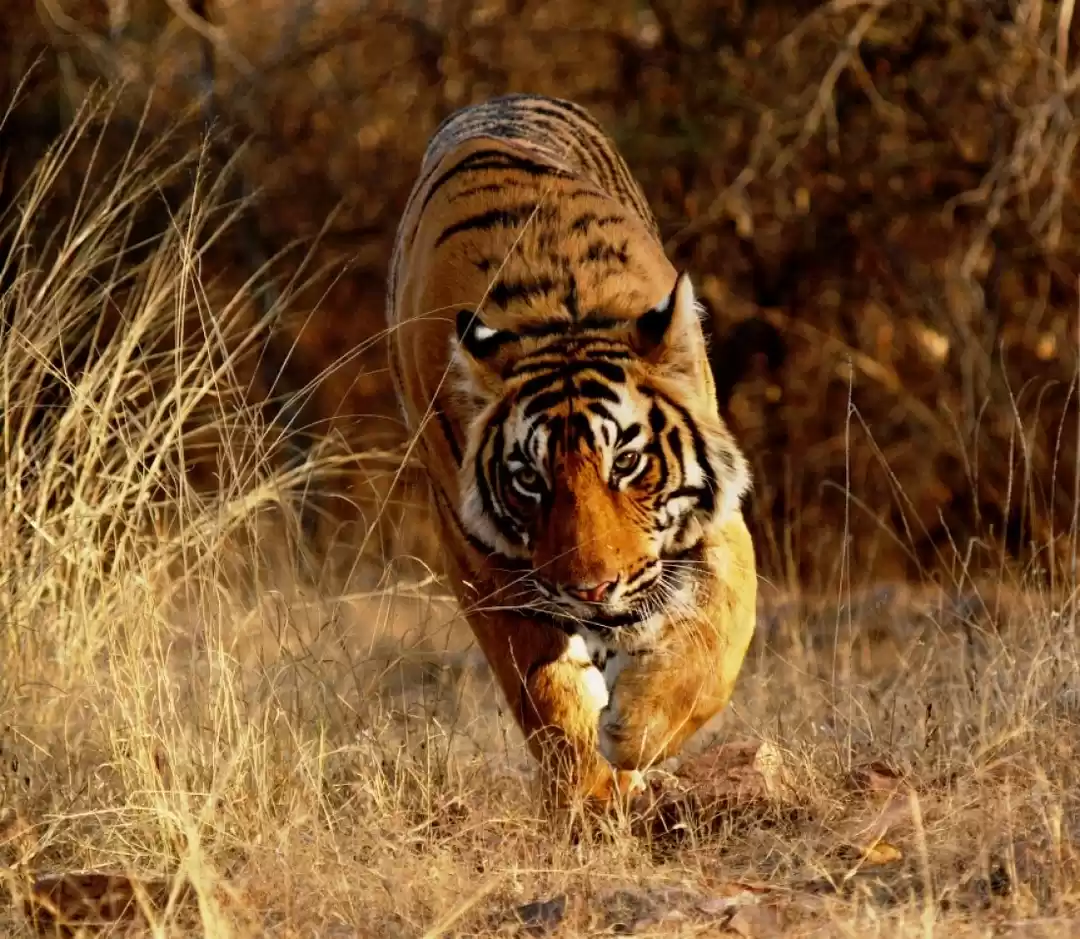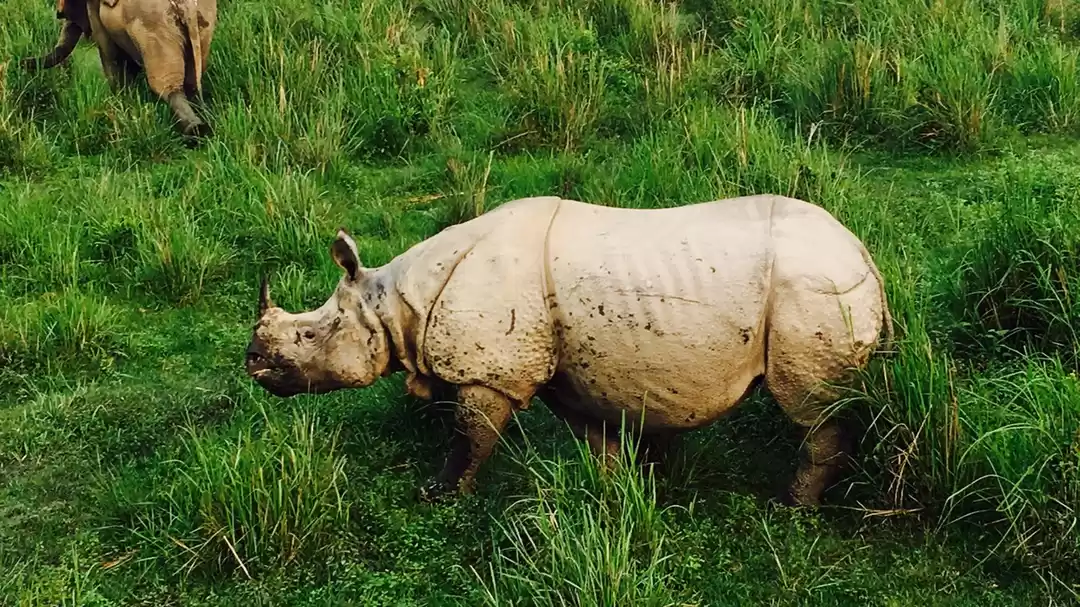
Increasing tiger numbers have been garnering several tourists across tiger reserves in India.
"tiger is a large-hearted gentleman with boundless courage and that when he is exterminated-as exterminated he will be unless public opinion rallies to his support-India will be the poorer, having lost the finest of her fauna."
― Jim Corbett, Man-eaters of Kumaon
It is established for centuries now, that India is a Tiger country. The first place that pops up in one's head upon hearing about this magnificent animal is India. Ever since the mention of tigers in the royal hunting grounds of the kings of past and their tales of hunting, there is picturised and documented proof of the abundance of this feline, in the jungles of the country. Now, contrary to beliefs of the people back then that tiger was just a ferocious animal, always ready to attack, now have evolved over time as they were educated about the animal through several awareness programs and documentaries, which to an extent have been able to change their viewpoint, and they started to recognise the beauty and grandeur of this magnificent animal. Though the tiger is still ferocious, people now know that it never kills for fun. The tigers continued to be mercilessly killed either by the kings in the name of trophy hunting, or by scared villagers trying to save their livestock from the predator's paws. One of the pioneers in believing in the concept of conservation of tigers and its habitat, was Mr. Edward James Corbett, popularly known as Jim Corbett. He was a hunter-turned-conservationist and later an author. He educated people back in the day about the importance of this animal for the ecosystem of the country. It has been several years since, Corbett's lanky figure, with a rifle on his shoulders roamed the jungles of North India. There were 9 tiger species in the world out of which, only 6 are still there, the other 3 being extinct now and India is home to only the Royal Bengal Tiger, the second largest sub-species of the Tiger, after the Siberian Tiger. It would be fair to say that since Independence, India has done a commendable work to save the Tiger in the wild, not to forget the introduction of Project Tiger in the year 1973. Tigers in India were dwindling at around 1411 individuals in the wild in 2011. It has risen to 2967 individuals as of the latest tiger census in 2018. The growing population and awareness about the tiger has managed to attract huge numbers of tourist from over the world, wanting to spot it in the wild.
I developed my interest in wildlife at a young age of about 4 or 5, when I would spend my time on the TV watching Animal Planet or National Geographic. It is fair to say that it was genuine that I on several occasions skipped cartoons to watch these shows. Credit goes to my parents for introducing me to these channels, which developed my liking for the wildlife and shaped up my mind to know about them in those early years. My first visit to the zoo is now somewhat faded, but two instances are etched in my memory till day. One was watching the White Tiger and the other was hearing the roar of the Asiatic lion, that scared me like anything and I ended up crying. The big cats of the wild always fascinated me, and being a Hindu by religion, I saw lions and tigers, being the carriers of gods and goddesses, and was filled with awe seeing humongous idols of lions and tigers. Tigers have a special liking in my books owing to their character, grandeur and beauty. All I wanted now, was to see a tiger in the wild. And yes, in summer of 2008 for the first time ever, I was going to Ranthambore National Park, in Rajasthan and I couldn't be happier. My excitement knew no bounds as I boarded the canter, almost sure at every turn during the safari that now I would see the tiger. After 3 hours, I was blank and on the verge of crying that I hadn't seen the tiger. I almost yelled at Papa, that what was the purpose of this safari, when I couldn't see what I came for. He calmly responded, that this is why National parks are different from zoos. He said, " Beta, this is their home and we are here just to give them a visit. We cannot assume that we can see tigers just because we visited their home. Patience is key. Just wait, you will be rewarded." I still couldn't come to terms with what he said. It was a hard pill for me to swallow.
The year was now 2012. Four years after my visit to a national park, it was time for my second attempt at seeing the tiger in the wild. I was now living in Nainital, Uttarakhand. The destination was Corbett National Park. There was a lot of anticipation this time around. We had booked the safaris in Dikhala, considered one of the best zones in the park, and to double our chances we were to do two safaris this time. The early morning safari was the one I was very hopeful about, but that too was disappointing. I had almost seen every other animal, but not the tiger. Dejected, we came back to the forest lodge. I had lunch with a grim face, but by the time of our 2 nd safari of the day, it was as if I came back to life. In this safari, after an hour of roaming around, something crossed in front of us. A lightning of black and gold. Yes, I had seen it, but only for the sake of it, because it lasted only for a couple of seconds and Whoosh! Gone. I was tired of this hide and seek now, but amidst the disappointment of coming so close and failing to sight it to my heart's content there was a sense of happiness and relief. Yes they are there, and when the day comes you will see them. This was the feeling that loomed around my head the whole day. I was overjoyed to prove the people wrong who said there were no tigers in Corbett. Years passed and I visited other parks and sanctuaries: Bandipur, Mudumalai, Sariska, Periyar etc, but the tiger was still in hiding. Sometimes, I would see the fresh pugmarks, as the distant alarm call rang in my ears, and on other days I narrowly missed the tiger, that had been quenching its thirst in hot summer noon. The game of hide and seek went on and on, and I didn't give up. Along the years I developed a keen interest in photographing the wild. I got clicking but yes, the tiger was still amiss from my gallery. Although, now that I had grown up and got to know how the wild-life functions. I came to terms with the fact that it was nothing but a game of patience. Yes, you can strategize your safaris, choose the national parks accordingly, guess the weather and still no one in this world can guarantee the sighting of a tiger in the wild.
Tigers are solitary animals, and often prefer to stay in shadows of the jungle. They prefer to avoid humans and hence their natural tendency is to not cross paths. They have a keen sense of hearing and are able to pick up the faintest of sounds. Also, tigers are territorial in nature. The bigger, powerful the tiger is, greater the territory occupied by it. The tigers are predominantly nocturnal in nature and ambush predators, and therefore are very silent and cautious while moving around. The habitat of the tiger greatly helps it to camouflage and makes it even more difficult to spot even in broad daylight. All these factors combined, justify why so many people aren't able to spot it in the wild. While seeking tigers, the one who is the most keen and patient, relishes the beauty, of one most beautiful creatures on the face of the earth.

Noori with her kill, Ranthambore National Park.
It wasn't until March this year, that again I went back to the beautiful Ranthambore National Park, and after a wait for 12 years, I saw my first tiger (properly). I saw Noori, the daughter of Noor, a famous tigress of the park. She was resting, after hunting a Sambhar deer, whose carcass lay beside her. I didn't have an appropriate lens for the occasion ( Yes, the telephoto lenses are very expensive !!) but managed to capture her at least. It was an emotional joyride that I went through after I managed to overcome the awe and exhilaration. It was special, a moment to rejoice, after years of seeking and waiting.
This, is my story till now, after 12 years of wait I could spot a Tiger in the wild. What I want to convey through this piece is, it is okay to not spot one, even after several efforts. We need to understand the fact that this is their home, and we are mere visitors. The maximum we can do is anticipate and expect things to go in our favour. During the course of my travel to all these national parks, I overheard several people cursing how they couldn't see the tiger. Some even go into fights and altercations with the guides and forest officials, alleging that their money was 'wasted'. I used to get angry, whenever I faced such situations. People would absolutely lose it during the course of the safari for they did not see a tiger, while on the other hand they are constantly chattering during the course of the safari and absolutely denying and disrespecting all the rules of jungle safaris. They howl, chatter, throw bottles out of their vehicles and then somehow manage to complaint they didn't see a tiger! In retrospect I realise that this is a grassroot level problem that persists because of the lack of sensitisation and education of the general public about Wildlife and Nature. If children aren't taught about the ways to behave in the wild and the importance of conservation of wildlife, they would certainly grow up as individuals that are absolutely careless about their behaviour when they visit these national parks. One of the major reasons of setting up of these parks is to educate people about wildlife and how to protect them. Now the question is, if we follow all the rules and guidelines during a safari, does it ensure a 100% chance of sighting the tiger? The answer is NO. Yes, you will certainly increase your chances, but it will never amount to 100% and that is the fun and thrill of it. Those tense moments, those moments of uncertainty, the waking up of the jungle, to announce the arrival of the Majestic Tiger! My life till now has been a solid proof that waiting is the key to unlock the mystery of tiger in the wild. It took me 12 years to sight it properly and I am yet not satisfied. Such is the magic and pull of this animal. I also agree that it is extremely disappointing for the several eager eyes, waiting for the tiger to arrive on the scene, to not see one. It's disheartening but one might not lose hope and continue his/her search for the tiger. In the coming years, I will continue my quest to get up, close and personal with this big cat. As Tiger Tourism continues to grow in the country, I request all of you to be patient, be kind to the wild. Till then make sure to enjoy this game of hide and seek with this magnificent creation of Mother Nature, for when you see it, no doubt it will be worth the wait 😉.
All the pictures used in this article are my own clicks, by the name of: butterfingerclicks.















